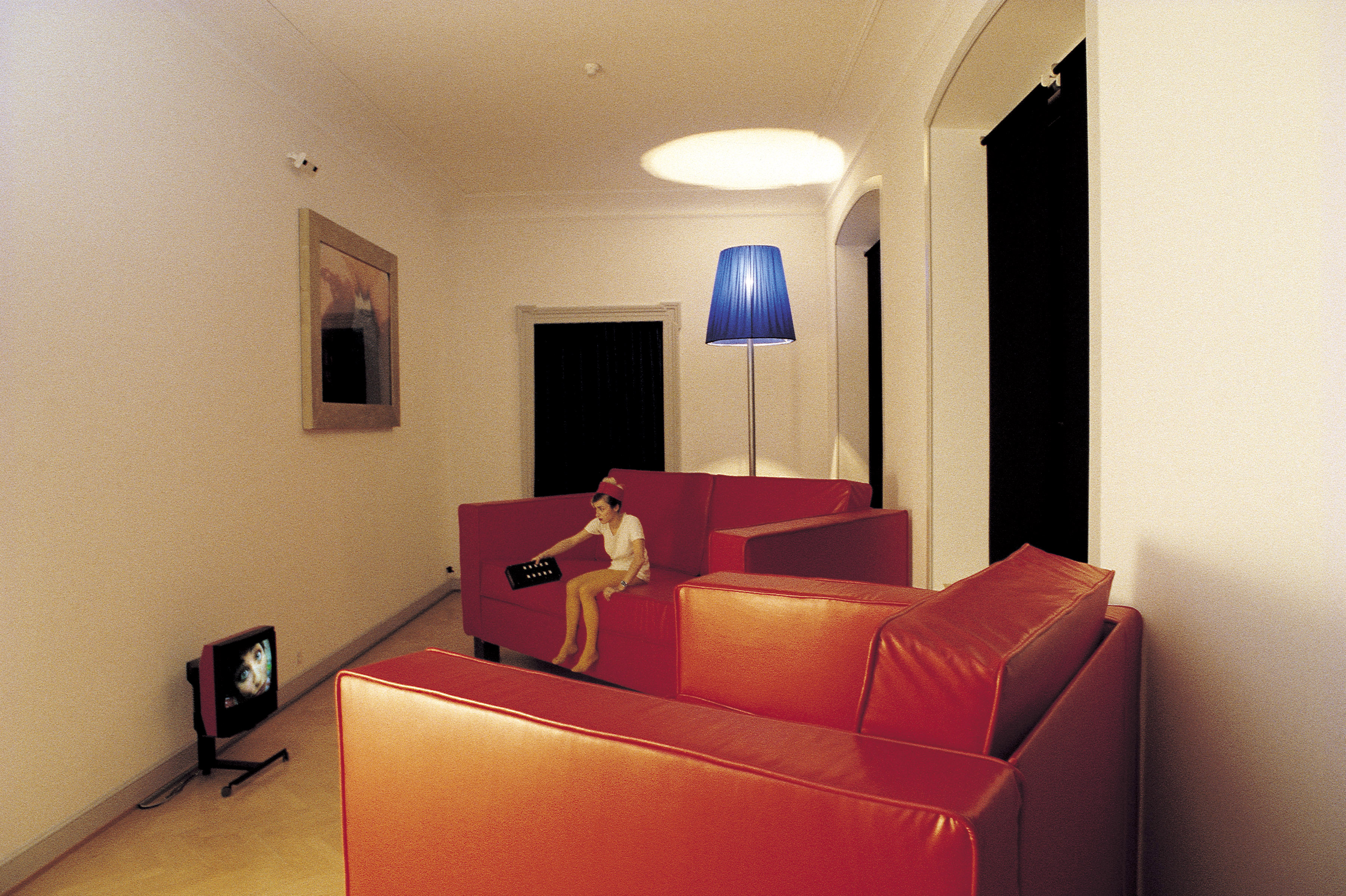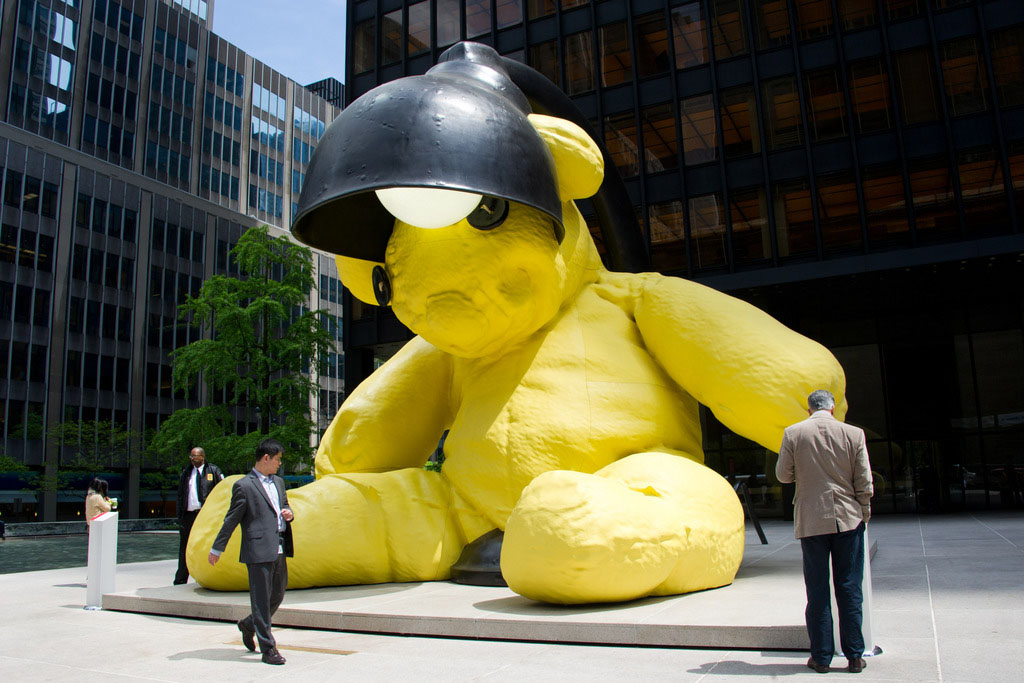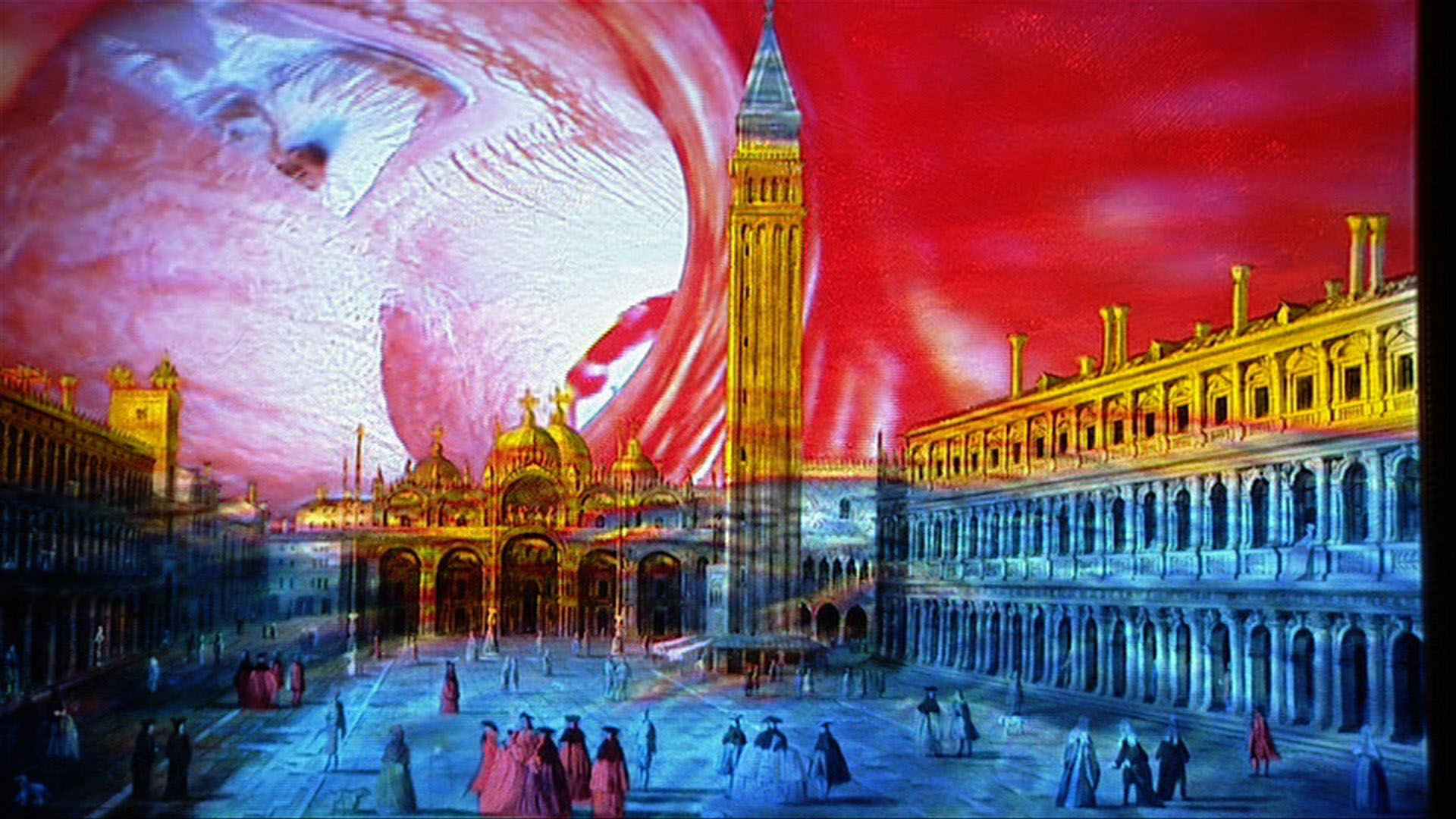Pipilotti Rist show seeks to widen perspectives

Switzerland is celebrating one of its most successful living artists with a retrospective on home turf for the first time. Pipilotti Rist’s show at the St Gallen Kunstmuseum features her trademark videos and exploratory works on femininity.
Rist is reckoned to be amongst the ten most important contemporary artists in the world, according to the respected Kunstkompass 2011 artist ranking compiled by the German magazine Manager.
The most prestigious museums in the world, including New York’s MoMA, have commissioned her work. Now she has taken over the Kunstmuseum with nearly 20 works old and new, each one exactly tailored for the space it occupies.
The show, Blood Driven Cameras and Growing Rooms (Blutbetriebende Kamera und quellende Räume), has colourful, fun works ranging in size from a few centimeters to some occupying entire rooms.
“Video and sound is a lousy copy of our senses,” Rist told swissinfo.ch. “Therefore I try to use it in all sizes … to make it as if we took out our eyes and hung them out in the air.”
The pieces do indeed transport you to normally impossible points of view – such as in La belle étoile (Unter freiem Himmel), a video work projected onto the tiled floor of the museum. It gives you a view of a spinning earth while also allowing and even inviting you to walk on it.
Konrad Bitterli, who curated the retrospective, paid tribute to the way the pieces immerse the visitor. “We are all invited to be part of the installations. We are invited to be seduced by her images, and also to play along with the installations.”
One piece, St Galler Antimateria, cleverly animates the sky background and lake foreground of a 19th century Camille Corot painting, by projecting a video onto it. The areas remain distinct, the video fitting exactly and snugly around the leafy tree and mountains in the foreground.
Another work, Selbstlos in Lavabad, is barely a couple of centimetres wide, and buried in a floorboard. Meanwhile a new piece, Administrating Eternity, takes over a whole room. Videos from Rist’s home area are projected onto rows of translucent curtains, allowing you to walk in and around scenes from the Swiss Alps.
“New language”
Rist came to prominence when her then Basel gallery, Stampa, gave her a solo exhibition in 1993 and then used only her work in its booth in the Art Basel fair in 1994.
“It caused quite a stir,” recollects gallery director Gillian Stampa. “On one hand, her handling of the video as an artistic medium involved an absolutely new language of the motion picture and, on the other hand, as it comes to her work’s subjects, it represented a decidedly female position.”
This female situation has become a Rist hallmark. Several works in the exhibition reference recurring themes for Rist, such as the body and femininity.
Famous early works Pickelporno and I’m not a Girl that Misses Much (Ich bin nicht das Mädchen, das viel vermisst) are here, while Hiplights or Enlighted Hips (Hüftlichter oder aufgeklärte Hüften) has lights in the shape of underpants suspended outside the museum entrance. Rist’s bright colours and charm come across in art that’s accessible and fairly easy to understand.
At the exhibition opening, the artist told journalists that her work was intended for everybody – saying there is a “50 per cent chance of being born male”.
Other exhibited works represent wider political and social themes. Lippenbekenntnis, a work in one colour, red, is dedicated to the victims of North Korean labour camps.
Premier league artists
Roland Wäspe, the Kunstmuseum director, maintains that Rist hasn’t moved away from her feminist convictions. “Being feminist means you are autonomous as an individual. In being successful as a female artist, Pipilotti transforms this technical world from a man’s world into a world everyone has access to. In this case, her work is very precisely feminist.”
Konrad Bitterli, curator of the retrospective, doesn’t know if the “feminist art” tag is very useful however. “Any kind of labeling is bad for the artwork and for the scope art can have, because it limits the perspective we put on it. Some female artists make a point of wanting to be known as feminist artists but most, I think, want to be known as artists.”
Such labels do not limit artworks when they come to be sold, according to art market expert Jörg Lederle, who says: “We do have a lot of Swiss female artists playing in the premier league”.
Besides Rist, he points to Sylvia Bächli and Sylvie Fleury. Investors judge the art on its own terms, he says. “For a collector it’s not important whether the art has been made by a man or a woman. It’s more important to see how they can interact with the art, whether there is a message they can transcribe. It’s the content that’s important.”
Rist in the audience
Swiss female artists with an identity have marked recent art history in Switzerland. Meret Oppenheim came of age with the surrealist group of artists, and yet her most famous work, Object (Le déjeuner en fourrure), comes from a strong female position. The artist’s name lives on in the Swiss government’s Meret Oppenheim prize for art.
Another artist, Niki de Saint Phalle, acquired Swiss nationality in 1971 when she married Swiss artist Jean Tinguely. Her self-taught, distinctive style can still be seen in Zurich station’s main hall where the colorful L’ange protecteur watches over travellers from the ceiling.
St Gallen’s Kunstmuseum gave Rist an exhibition in 1994, early on in her career, making this retrospective also a return. Does the artist intend on coming to see what her compatriots make of it?
“Yes, I tend to go to the exhibitions like a normal visitor, to start discussions, to find out what they really honestly think and say. I will take off my glasses and put down my hair, and I will do it as often as I can.”
1962 Born in Grabs in canton St Gallen.
1982 – 1986 Studied commercial art, illustration and photography at the Institute of Applied Arts in Vienna, Austria.
1986 – 1988 Studied audio-visual communications (video) at the School of Design in Basel.
Since 1986 Freestyle video/audio works and installations.
1988 – 1994 Member of the band Les Reines Prochaines.
2002 Visiting professor at UCLA, Los Angeles.
2005 – 2009 Produced her first feature film, ‘Pepperminta’.
Since 2004 she has lived and worked in Zurich and in the Swiss Alps.
Her favorite number is 54. She is against taboos and stereotypes.
The retrospective, is Pipilotti Rist’s first comprehensive solo exhibition in Switzerland.
The show runs until November 2, 2012 at the St Gallen Kunstmuseum.
The show features 20 of the artist’s works and was developed in collaboration with London’s Hayward Gallery and the Kunsthalle in Mannheim.

In compliance with the JTI standards
More: SWI swissinfo.ch certified by the Journalism Trust Initiative


You can find an overview of ongoing debates with our journalists here. Please join us!
If you want to start a conversation about a topic raised in this article or want to report factual errors, email us at english@swissinfo.ch.